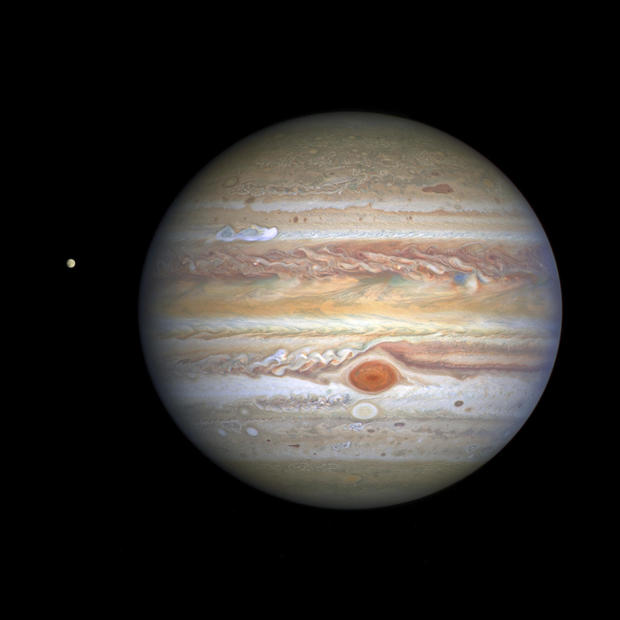Dazzling new images of Jupiter show "remarkable new storm" moving at 350 mph
Jupiter and its enticing moon Europa shine in a new photo by the Hubble Space Telescope. Hubble snapped the picture last month when the planet was 406 million miles away, and the Space Telescope Science Institute in Baltimore released it Thursday.
Europa, which is smaller than our own moon, appears as a pale dot alongside its giant, color-streaked gas planet. A bright white splotch in Jupiter's northern latitudes indicates a new storm barreling around the planet at 350 mph.
"Hubble's sharp view is giving researchers an updated weather report on the monster planet's turbulent atmosphere, including a remarkable new storm brewing," the European Space Agency/Hubble said in a statement.
Jupiter's Great Red Spot, meanwhile, is unusually red in the photo. While gradually shrinking, the massive storm is still big enough to swallow Earth.
"While it's common for storms to pop up in this region, often several at once, this particular disturbance appears to have more structure behind it than observed in previous storms. Trailing behind the plume are small, counterclockwise dark clumps also not witnessed in the past, " the ESA said. "Researchers speculate this may be the beginning of a longer-lasting northern hemisphere spot, perhaps to rival the legendary Great Red Spot that dominates the southern hemisphere."
Hubble also captured a new multiwavelength observation in ultraviolet/visible/near-infrared light of Jupiter.
As for Europa, scientists believe an ocean is flowing beneath its frigid surface. NASA plans to launch a spacecraft, the Europa Clipper, later this decade to see if conditions there might be ripe for life.
That mission "aims to explore both Jupiter and three of its largest moons: Ganymede, Callisto, and Europa."





